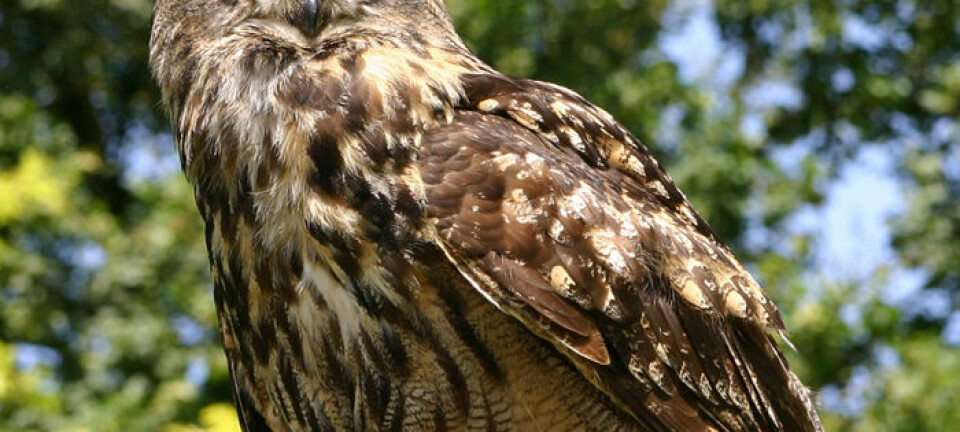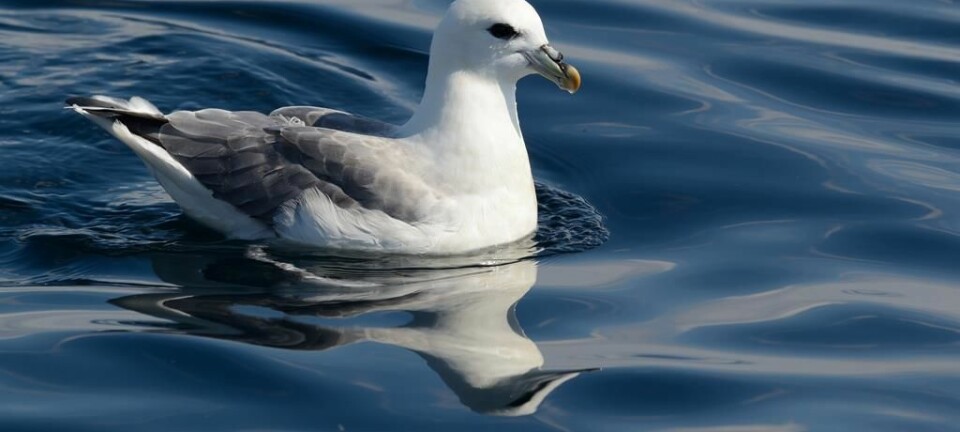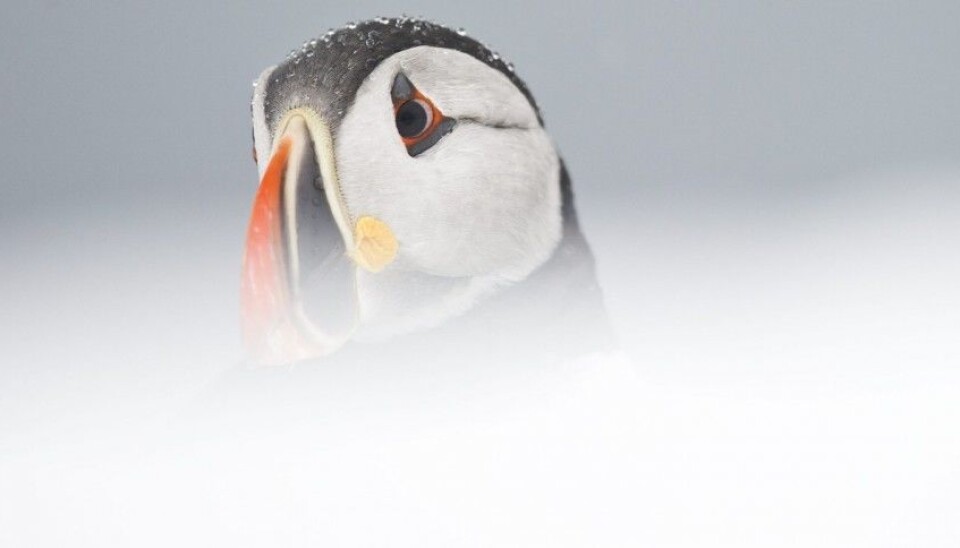
Conservative seabirds in a squeeze
Seabirds don’t like changes. This trait can kill them.
ScienceNordic and other media have in the past few years reported a dramatic decrease in seabird populations in Norway.
“I was shocked the last time I boated beneath the nesting cliff at Syltefjord in Finnmark County.”
“The two-kilometre-long and 200-metre-tall cliff face was nearly devoid of birds.”
Rob Barrett is a researcher at the Tromsø University Museum who has kept an eye on the Norwegian seabird population for years. Last time he visited the mighty nesting cliff on the north coast of the Varanger Peninsula in Finnmark, what just a few decades ago was a colony of 10,000 to 15,000 nesting pairs of the common guillemot and nearly 150,000 noisy pairs of kittiwakes had now been reduced to a just a few thousand birds.
A quarter of the birds are ‘Norwegian’
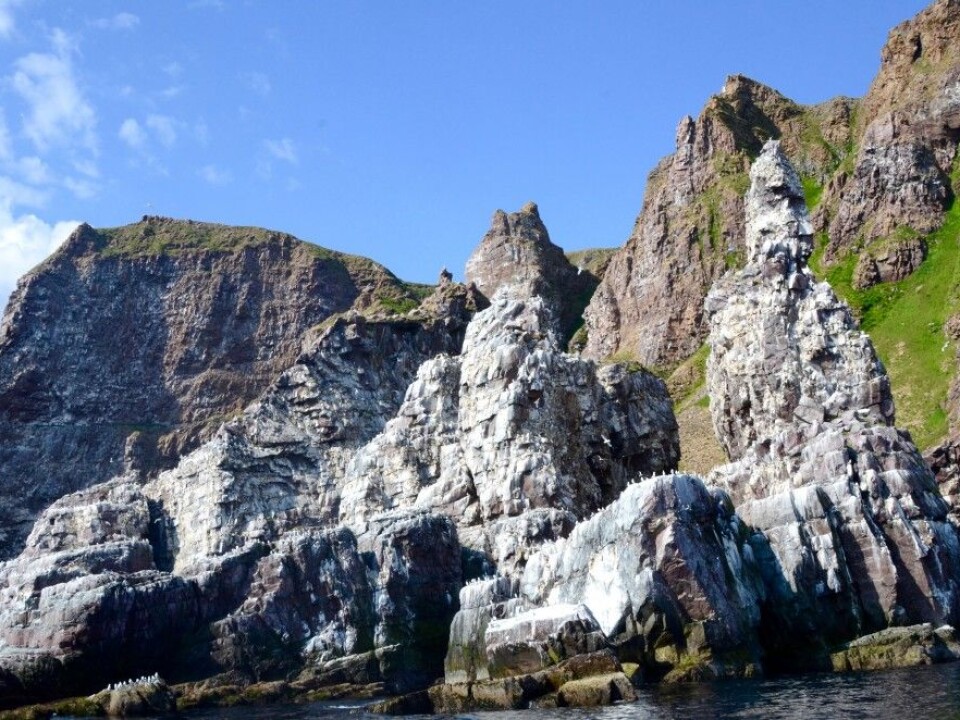
Norway has responsibility for one in four seabirds in Europe.
In the past ten years, 30 percent of the seabirds that live on the mainland coast have disappeared. Such population declines do not seem to have occurred on the Svalbard Archipelago and the volcanic island of Jan Mayen, both in the Arctic Ocean.
Scientists have learned much from the extensive Norwegian monitoring and charting programme for seabirds called SEAPOP.
Researchers are now seeing the devastating effect on seabirds as ocean temperatures rise and access to food takes a nosedive.

Even though the temperature changes and the fish and marine life they rely on are gone, birds on nesting cliffs do not show many tendencies to move to new and potentially better sites.
“Seabirds are very conservative animals. Once a pair has settled for a site they stay there. Their offspring can move. But we haven’t witnessed any change in the habitation areas for the species, perhaps with the exception of the northern gannets, which have started to nest at Bjørnøya,” says Rob Barrett.
Bjørnøya is the southernmost island of the Svalbard Archipelago.
Women’s hats and climate change
The northern gannets were almost driven to extinction by the European millenary – hat making – industry.
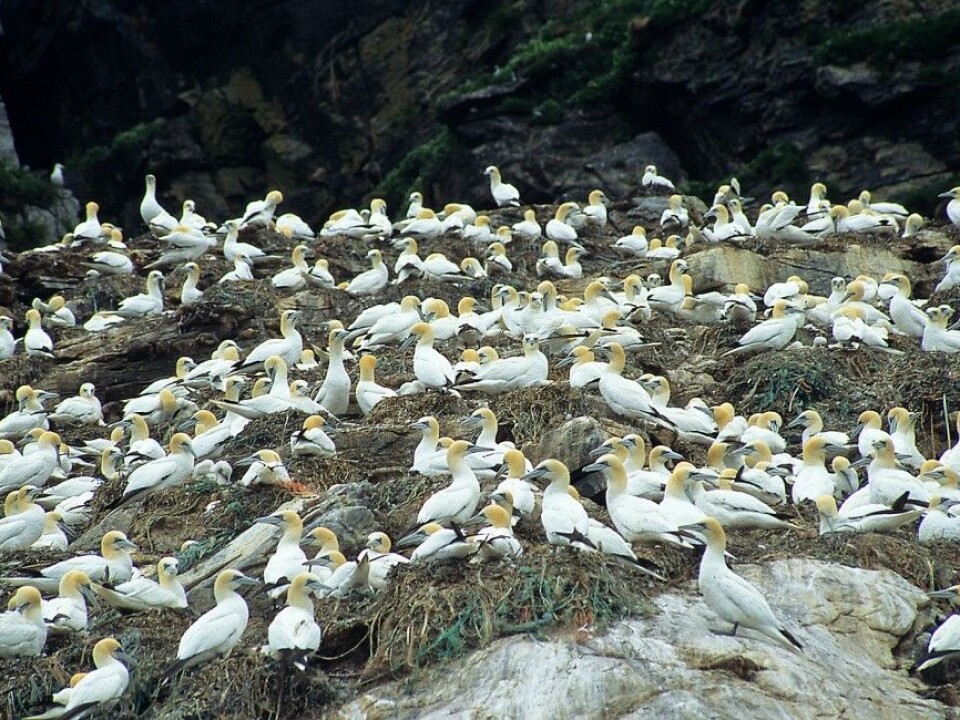
In the 1800s women wanted feathers in their hats and their husbands were happy to sink their teeth into northern gannet meat. But the bird is a species that can still thrive. One definite advantage is its taste for mackerel, a fish that has expanded its territory northwards along the Norwegian coast.
Rob Barrett is concerned nonetheless.
Other important seabirds such as the Atlantic puffin and the common guillemot are not faring as well.
Nor are things looking up for kittiwakes and auks.
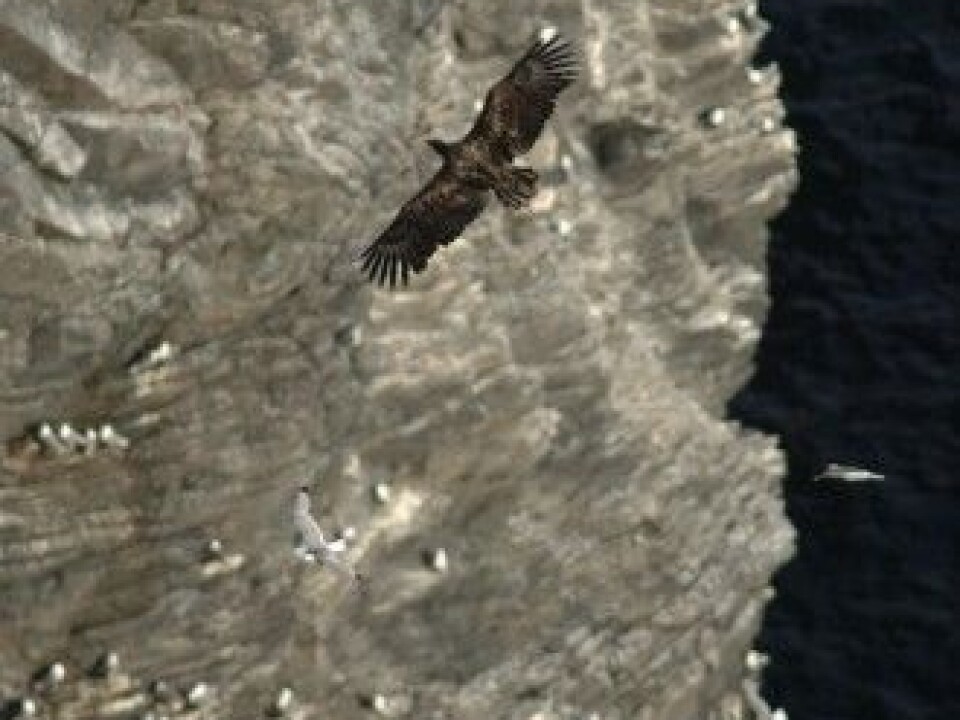
“The ocean is undergoing changes because of climate change. Seabirds that live in the high north are fine-tuned to the times when food for their offspring normally comes north with sea currents.”
“It can mean a catastrophe for nesting in North Norway in a given year if the herring fry from Norway’s Møre og Romsdal County coast turn up 14 days early or 14 days late.”
Seabirds have evolved with the ability to survive such catastrophes in one year or another. But they have no way of dealing with a lack of prey to feast on several years in a row.
Hunting seabirds
Rob Barrett moved to Norway from Wales in 1972.
He eventually took over the job of ornithologist Einar Brun, who died in 1976. Barrett is grateful for his predecessor’s seabird registrations which provide long-term data and understanding of developments among Norwegian seabird populations.
“In 1967 Brun registered over 100,000 nesting common guillemot pairs at Hjelmsøya directly west of the North Cape. This spring there appears to be no more than 20,000 pairs at this site.
“Right up until the 1970s people were permitted to collect the eggs of seabirds in Norway. Hunting was also permitted during the winter. Added to that, drift net fishing for salmon beneath the nesting cliffs killed many adult birds. This is now totally banned.”
“But I’m afraid the sea eagle has helped cause the population plunge we see today,” says Barrett.
Minks, foxes, and seagulls along with a rising population of sea eagles have taken over as threats against seabirds along the Norway’s wild and extensive coast.
“It is appalling to visit a nesting cliff where minks have been and see so many abandoned nests filled with headless chicks.”
Food is most important
Despite such natural predators, declining access to food is probably having the biggest impact on seabirds.
Advanced research methods enable scientists to see how fish larvae drift with ocean currents along the Norwegian coast, northwards toward the nesting sites.
Researchers have discovered two systems along the Norwegian coast that are vital for seabirds during the nesting period when eggs hatch:
The common guillemot and cod larvae: For a long time it was believed that the guillemot population in North Norway depended on capelin in the Barents Sea. Now we know that cod larvae from spawning cod in Norway’s Lofoten Archipelago are more essential to the diet of adult and juvenile guillemots.
The Atlantic puffin and herring larvae: The numerous Atlantic puffins at Røst depend entirely on fry hatched by spring spawning herrings at Møre, further south in Mid-Norway. The fry are dependent upon zooplankton, which in turn feed on blooms of phytoplankton. Researchers have seen that much can go awry in this food chain, both in timing and in locations.
When both of these birds are feeding their chicks they depend on the fish larvae hatching much further south that drift northwards with the sea current along the Norwegian coast. In addition to things going wrong with plant and animal plankton, this transportation current and the time it takes move the plankton and fish fry varies from year to year.
If no herring fry make their way from Møre, no Atlantic puffins grow up in Lofoten.
If the cod larvae don’t make it to Lofoten there are no common guillemot chicks surviving further north.
Surprising link
Researchers have now discovered a more fascinating link between phenomena far from each other.
Using small GPS transmitter the seabird researchers can now follow the movements of birds across enormous distances. This has enabled them to follow the black-legged kittiwakes from the nesting cliff at Hornøya furthest north in Finnmark, seeing how it migrates the long way off, initially to an area of the sea east of Svalbard, and then spending mid-winter at the Grand Banks off Newfoundland, Canada.
This is how scientists discovered that fluctuations in the populations of tiny sea angels in the ocean off Newfoundland and the schools of capelin in the Barents Sea explained over 50 percent of the variation in the kittiwake population at Hornøya in Finnmark.
Diminishing numbers of the tiny gastropods called sea butterflies and sea angels are found off the coast of Newfoundland. Their decline is probably due to marine acidification, which destroys the shells they have in a life stage prior to metamorphosis.
This is how acidification of the ocean, traced to global warming, has led to a decline in black-legged kittiwakes in Finnmark.
Pleasant surprise
A surprising result from another research project lead by the Norwegian Institute for Air Research (NILU) is that the enormous amounts of microplastics in the oceans do not comprise as big a threat to seabirds as feared.
The plastic debris that makes its way into the sea is gradually broken down by waves into miniscule particles of plastic that remain in the water for a long, long time.
Seabirds and marine organisms end up consuming lots of microplastics. But scientists have found that the environmental contaminants from this littering of the oceans are only minimally finding their way into seabird tissue.
The new NILU study shows that these contaminants are getting into seabird tissue from prey they eat.
Contrary to what scientists believed, the plastics do not seem to be poisoning the seabirds.
Will things improve?
“There are no doubts at all that Norwegian seabirds have been under considerable pressure for a long time,” says Rob Barrett.
About half the species of birds on Norwegian nesting cliffs have now become distressed to the point of being red-listed, meaning that they can face extinction.
Climate changes, fisheries, pollution and various human and animal activities have contributed to the decline of seabirds. Each of these threats is serious enough on its own.
Together they can be catastrophic.
But we can hope that Norway’s originally raucous nesting cliffs where the birds breed will not face silent springs and summers. That hinges on our gaining more knowledge and raising consciousness about the dangers of undermining the environment. As the saying goes: Nature is not dependent on humans. Humans are dependent on nature.
References:
R.T. Barret et al.: “The status of breeding seabirds in mainland Norway”, Atlantic Seabirds, 2006/8
P. Fauchald et al.: “The status and trends of seabirds breeding in Norway and Svalbard”, NINA Report 1151, 2015 2006
------------------------------------------------
Read the Norwegian version of this article at forskning.no







